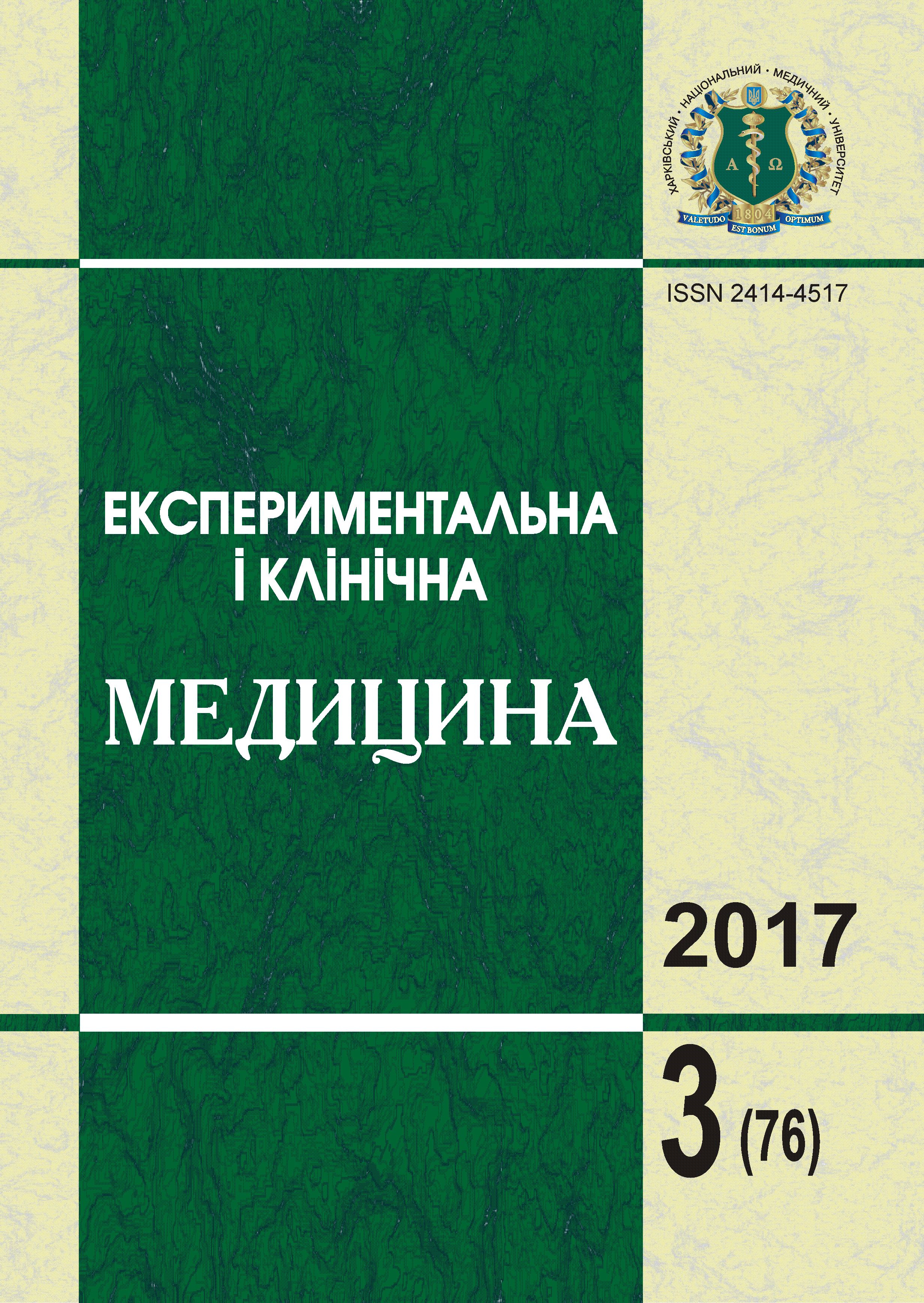Abstract
The relevance of the Epstein-Barr virus infection (VEB) is due to a high degree of infection of the population around the world (95% of the adult population). The purpose of this work was to establish the types of immune response based on the analysis of the dynamics of multidirectional cytokine synthesis in patients with chronic VEB-infection with different IL-28 genotypes. We examined 64 patients with chronic VEB-infection; the control group included 20 healthy people. As a result of the study, a correlation was found between the genotype of IL-28 and the formation of a dissociative or hyporeactive type of immune response. This can be useful in predicting the course of the disease in patients with chronic VEB infection and will optimize therapy, by introducing into the treatment regimen certain patient’s immunocorrective therapy.References
Vozianova Z.I., Gley A.І. (2004). Іnfectiyniy mononukleoz yak polietiologichne zahvoruvannya. Suchasni infekcii. 2. P. 37–41.
Іsakov V.A.. Е.I. Аrhipova, Isakov D.V. (2006). Gerpesvirusnie infekcii cheloveka: rukovodstvo dlya vrachey. Spb. 303 p.
Prohorova N.А., Volochkova Е.V., Mihaylovskaya G.V. (2008). Klinscheskoe znachenie molecularno-geneticheskih i serologicheskih issledovaniy v diagnistike infekcionnogo mononukleoza // Іnfectiynie bolezni. 6. 2. P. 17–20.
Goreyko Т. V., Kalinina N. М., Druzhinina L. V. (2011). Role citokinov v patogeneze hronicheskoy infeccii, vizvannoy virusom Epsteina-Barr // Citokini i vospalenie. P. 44–49.
Кrasnickaya A.S., Borovskaya N.А. (2012). I mmunologicheskie aspekti hronicheskogo tonsillita, аssociirovannogo s virus Epstaine-Barr // Fundamentalnie issledovaniya. P. 299–305.
Domnikova N. P., Petrusenko E. E., Reshetnikov O. V., Rizhikova S. L., Varaksin N. A. (2010). Uroven sivorotochnih citokinov pri limphoproliferativnih zabolevaniyah // Novosti «Vector -Best». 2010. № 2 (56). P. 4–7.
Коchubey О.А. (2013). Citokini, yak pervinni mediatori v regulyacii reakcii vospaleniya // Zagalnoterapevtichna praktika: Novi tehnologii ta mizhdisciplinarni pitannya: Materiali naukovo-praktichnoyi konferencii z mizhnarodnoyu uchastyu, 7 listopada, 2013 r. Nacionalniy Institut terapii imeni L.Т. Маloy NAMN Ukraini, Kharkivskiy nacionalniiy medichniy universitet. Kharkiv, 2013. P. 164.
Cen О., Longnecker R. (2015). Latent Membrane Protein 2 (LMP2) // Curr. Top. Microbiol. Immunol. № 391. P. 151–180.
Fish K., Chen J., Longnecker R. (2014). Epstein-Barr virus latent membrane protein 2A enhances MYC-driven cell cycle progression in a mouse model of B lymphoma // Blood. № 123. P. 530–540.
Fukuda M., Kawaguchi Y. (2014). Role of the immunoreceptor tyrosine-based activation motif of latent membrane protein 2A (LMP2A) in Epstein-Barr virus LMP2A-induced cell transformation // J. Virology. № 88. P. 5189–5194.
Sheppard P., Kindsvogel W., Xu W. et al. IL-28, IL-29 and their class II cytokine receptor IL-28R // Nature Immunoly. № 4 (1). Р. 63–68.
Thompson A.J., Muir A.J., Sulkowski M.S. et al. Interleukin-28B polymorphism improves viral kinetics and is the strongest pretreatment predictor of sustained virologic response in genotype 1 hepatitis C virus // Gastroenterology. № 139 (10). P. 120–129.
Zekri A., Abdullah D., Osman A. et al. (2015). Epstein-Barr virus and Interleukin-28B polymorphism in the prediction of response to interferon therapy in hepatitis C patients // Arab J. Gastroenterology. № 16 (3). P. 84–89.
Griffin B.D., Gram A.M., Mulder A. et al. (2013). BV BILF1 evolved to downregulate cell surface display of a wide range of HLA class I molecules through their cytoplasmic tail // J. Immunology. №190. 1672–1684.
